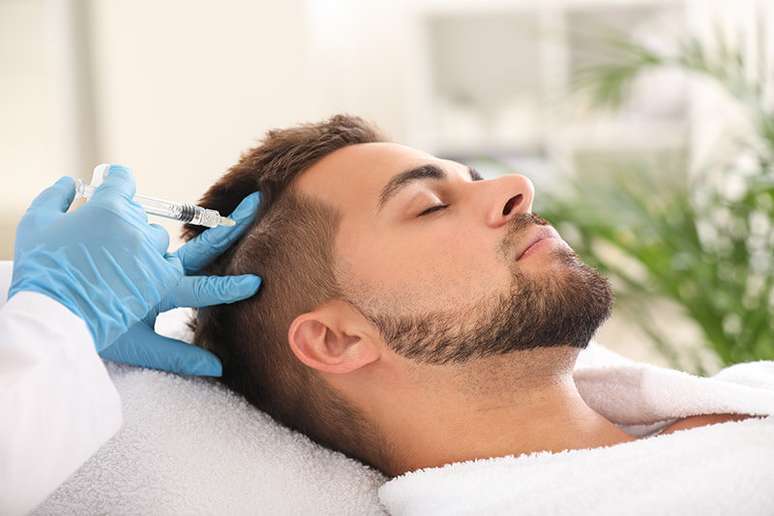The expert doctor explains how treatments can delay the need for a transplant or even improve the outcome
html[data-range=”xlarge”] figure image img.img-1d409d25a3a065cae70af417f3790f21wqg4cx8v { width: 774px; height: 516px; }HTML[data-range=”large”] figure image img.img-1d409d25a3a065cae70af417f3790f21wqg4cx8v { width: 548px; height: 365px; }HTML[data-range=”small”] figure figure img.img-1d409d25a3a065cae70af417f3790f21wqg4cx8v, html[data-range=”medium”] figure image img.img-1d409d25a3a065cae70af417f3790f21wqg4cx8v { width: 564px; height: 376px; }
Few people know it, but baldness is directly related to sex hormones, especially testosterone. According to the Ministry of Health, this explains the fact that the condition is much more frequent among men, since since women produce the hormone in much smaller quantities, cases are rare and, when they do occur, they are less drastic.
But is it normal to lose hair? When should a person be concerned? Trichologist Patrícia Marques, a specialist in hair health, explains that losing an average of 50 to 100 hairs a day is within normal limits and is considered a natural hair change.
“With baldness it’s different, hair doesn’t fall out more than normal, it thins and progressively shortens until it disappears and people notice, over time, that the amount of hair is reduced. It becomes thinner, the scalp starts to show, the hairline recedes and fine lines form. This is the natural process of baldness, which can start as early as the 20s in some men,” he explains.
The problem affects 85% of men over the age of 50
Data from the American Hair Loss Council show that, at the age of 35, more than two-thirds of men suffer from hair loss and, at the age of 50, 85% of them have to deal with the problem.
The good news is that technology has evolved a lot in the last decade and today there are several treatments for baldness.
“The standard is still the combination of drugs, but it is good to warn that they have adverse effects and contraindications and self-medication is not recommended in any case,” warns the specialist.
In addition to medications, infusions directly into the scalp, microneedling, radiofrequency, lasers, LED plates, and even growth factors taken from the patient’s blood can be used in the treatment. “The combination of these types improves the result and makes it more expressive, faster and longer lasting,” says Marques.
When to think about a transplant
When the patient already has permanent hair loss, only the transplant saves. According to Patrícia, who is also a plastic surgeon and forehead reduction specialist, there are many techniques, but in general they all capture follicles from regions that are not susceptible to baldness and transplant them to the needed region, usually the entrances and the crown.
“Patients with hair transplant indications should have clinical baldness treatment before and after the procedure, and this can delay the need for the transplant, improve the outcome, and reduce the need for additional sessions,” he says.
The specialist also points out that baldness is a chronic capillary disease that has no cure, therefore the tendency is towards progression.
“I reiterate that the correct diagnosis of baldness is very important, because, even if they are not common, there are diseases that are very similar to it, but have other mechanisms of action. When you notice any capillary changes, always consult a trichologist to perform the trichoscopy examination ”, she concludes.
HOMEWORK inspires transformation in the world of work, in business, in society. Created by COMPASSO, a content and connection agency.
Source: Terra
Ben Stock is a lifestyle journalist and author at Gossipify. He writes about topics such as health, wellness, travel, food and home decor. He provides practical advice and inspiration to improve well-being, keeps readers up to date with latest lifestyle news and trends, known for his engaging writing style, in-depth analysis and unique perspectives.









